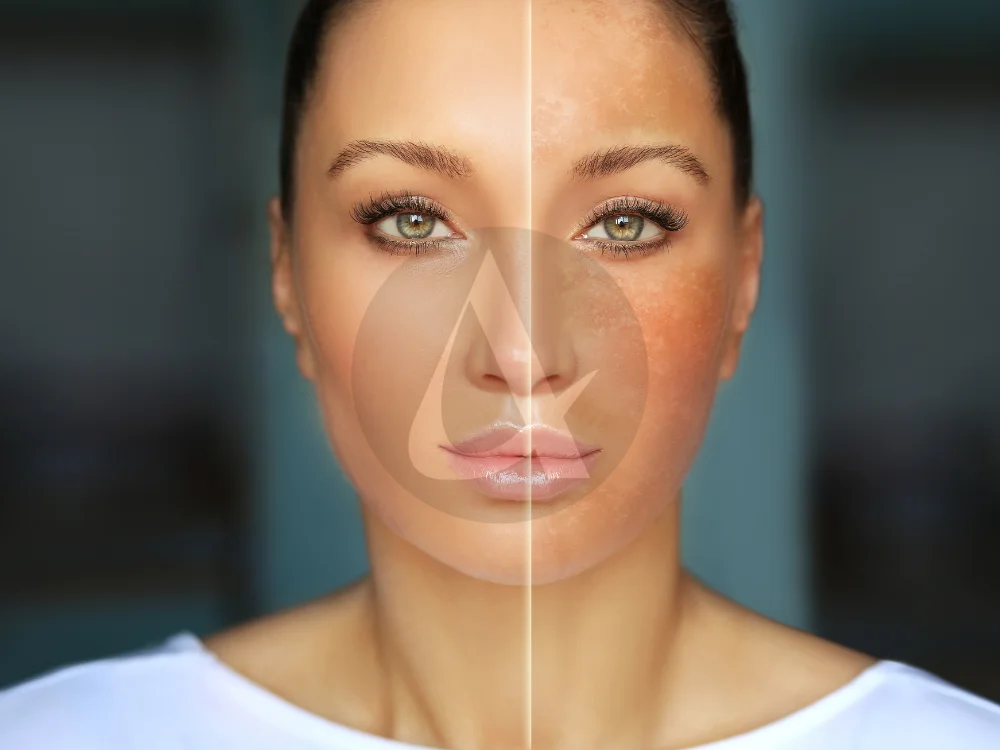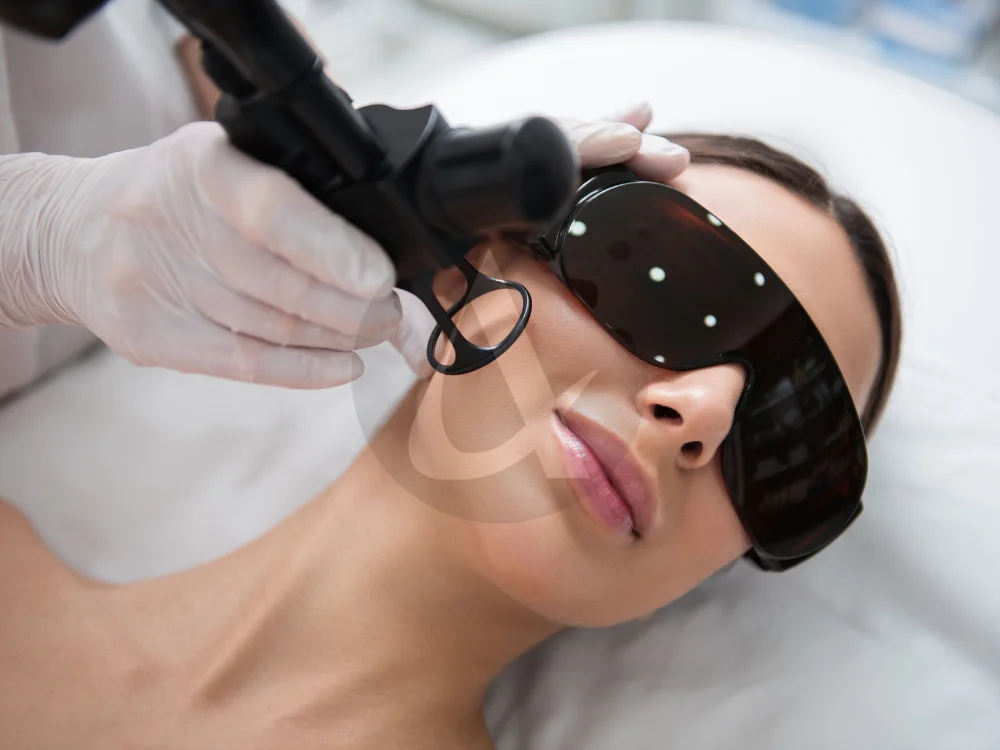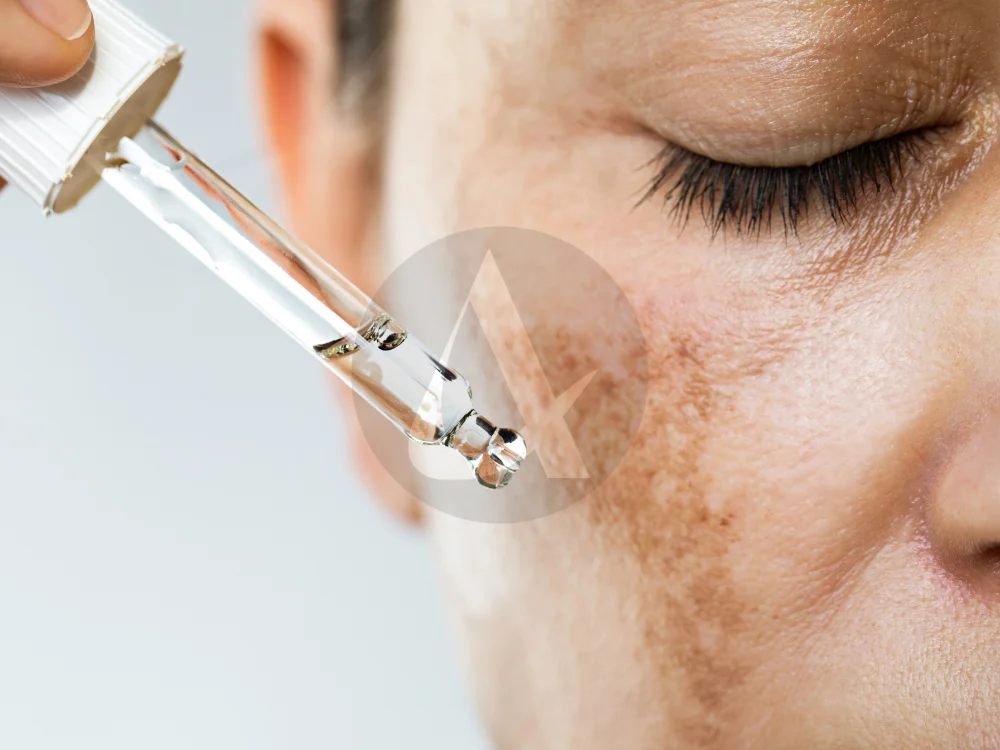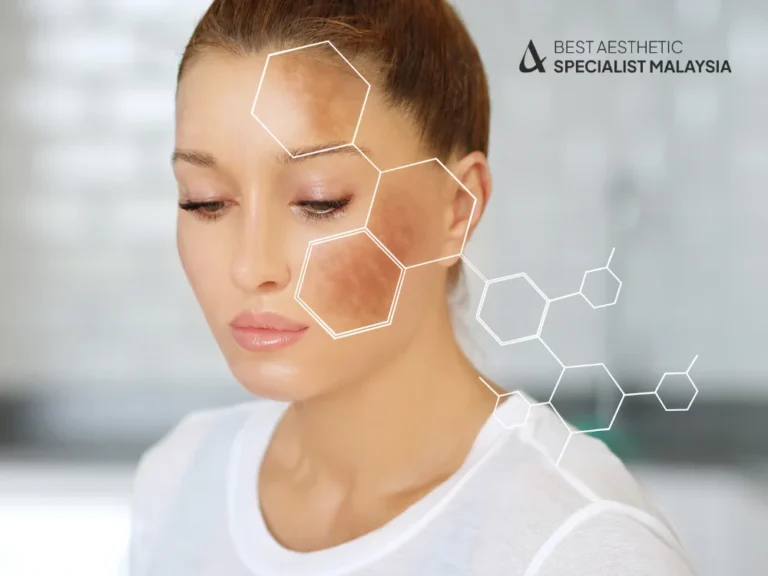Melanin plays a crucial role in determining skin color, offering protection against UV rays, and contributing to various skin conditions. As we dive into the world of dermatology, treatments like Fractional CO2 Laser have emerged to address pigmentation issues caused by melanin imbalances. This article will explain the relationship between melanin and skin pigmentation, and how treatments like the Fractional CO2 Laser can help improve your skin’s appearance.
What is Melanin?
Melanin is a natural pigment found in the skin, hair, and eyes of humans and animals. It is produced by cells called melanocytes, located in the basal layer of the skin’s epidermis. The amount of melanin in the skin determines its color—the more melanin you have, the darker your skin tone.
Melanin serves several essential functions, including:
- Protecting the skin from the harmful effects of UV radiation.
- Determining skin color and contributing to pigmentation.
- Influencing hair and eye color in addition to skin tone.
Melanin production is influenced by several factors, including genetics, sun exposure, hormones, and certain medications. In some cases, excess melanin production can lead to hyperpigmentation, where dark spots or patches form on the skin. This is where treatments like the Fractional CO2 Laser come into play.

Types of Melanin and Their Functions
There are three main types of melanin, each playing a distinct role in skin, hair, and eye pigmentation:
1. Eumelanin
Eumelanin is responsible for black and brown pigmentation in the skin and hair. People with darker skin tones typically have higher levels of eumelanin, which provides better protection against UV damage.
2. Pheomelanin
Pheomelanin produces red and yellow hues, and it is the primary pigment in individuals with lighter skin and hair, such as those with red hair. Pheomelanin is less effective at protecting the skin from UV damage compared to eumelanin.
3. Neuromelanin
Neuromelanin is found in the brain and is responsible for pigmentation in certain areas of the nervous system. While it doesn’t influence skin or hair color, neuromelanin plays an essential role in brain health.
The balance of these melanin types in your body determines your overall skin tone and how susceptible your skin is to sun damage or pigmentation issues.
What Causes Melanin Imbalance?
Melanin production can be influenced by both external and internal factors. A melanin imbalance can lead to skin conditions such as hyperpigmentation, melasma, or vitiligo. Some of the most common triggers for melanin imbalance include:
1. Sun Exposure
UV radiation from the sun stimulates melanocytes to produce more melanin as a protective response. Over time, excessive sun exposure can lead to an overproduction of melanin, causing sunspots or freckles.
2. Hormonal Changes
Hormonal fluctuations, particularly during pregnancy or while taking birth control pills, can trigger melanin overproduction. This condition, known as melasma, causes dark patches to appear on the face and other areas of the body.
3. Inflammation and Skin Injury
Inflammation due to acne, eczema, or cuts can cause the skin to produce more melanin in the affected areas, leading to post-inflammatory hyperpigmentation (PIH).
4. Age
As we age, our skin’s ability to distribute melanin evenly declines, which can result in age spots or liver spots.

How Fractional CO2 Laser Can Help With Melanin-Related Issues
The Fractional CO2 Laser is a popular non-invasive cosmetic procedure used to treat a variety of skin conditions, including those caused by melanin imbalances like hyperpigmentation and melasma. It works by using a laser to create tiny, controlled injuries to the skin, stimulating the body’s natural healing process and promoting the production of new, healthy skin cells.
1. Targeting Melanin Clusters
Fractional CO2 Laser is particularly effective for treating pigmentation issues because it can break down excess melanin in the skin. By targeting concentrated areas of melanin, the laser helps to fade dark spots and uneven skin tone caused by conditions like melasma or post-inflammatory hyperpigmentation.
2. Skin Resurfacing and Rejuvenation
In addition to addressing pigmentation problems, Fractional CO2 Laser stimulates collagen production and resurfaces the skin. This dual effect helps to improve skin texture, reduce fine lines, and give the skin a more youthful appearance.
3. Safe for Various Skin Types
While lasers can sometimes pose risks for people with darker skin tones (due to higher melanin content), the Fractional CO2 Laser is designed to be safe for a range of skin types. However, it’s essential to consult with a dermatologist to determine whether this treatment is right for your specific skin type and condition.
Benefits of Fractional CO2 Laser for Pigmentation
1. Precise Treatment
One of the key benefits of the Fractional CO2 Laser is its ability to deliver precise treatment to areas of concern without damaging surrounding tissue. This precision minimizes the risk of side effects and speeds up the recovery process.
2. Effective for Deep Pigmentation
Unlike topical treatments that may only affect the skin’s surface, the Fractional CO2 Laser can reach deeper layers of the skin to treat stubborn pigmentation, such as melasma or sun damage.
3. Long-Lasting Results
While results can vary, many people see long-lasting improvements in pigmentation after a few sessions of Fractional CO2 Laser treatment. Depending on your skin type and the severity of your pigmentation issues, your dermatologist will recommend an appropriate treatment plan.
4. Minimal Downtime
One of the advantages of Fractional CO2 Laser treatment is that it requires minimal downtime. While you may experience some redness and swelling immediately after the procedure, most people can return to their normal activities within a few days.
What to Expect During Fractional CO2 Laser Treatment
A typical Fractional CO2 Laser session lasts between 30 minutes to an hour, depending on the size of the treatment area. Here’s a step-by-step breakdown of what you can expect during the procedure:
1. Preparation
Before the treatment begins, your dermatologist will apply a topical numbing cream to minimize discomfort during the laser procedure.
2. Laser Application
The dermatologist will use the Fractional CO2 Laser to target areas with pigmentation issues. The laser creates microscopic injuries in the skin, prompting the body’s natural healing response and the production of new, healthy skin cells.
3. Post-Treatment Care
After the procedure, your skin may feel slightly sunburned, and you may experience some redness and swelling. These side effects usually subside within a few days. Your dermatologist will provide post-treatment instructions to help with the healing process, such as avoiding sun exposure and using a gentle moisturizer.

FAQs About Melanin and Fractional CO2 Laser
1. Can the Fractional CO2 Laser be used on all skin tones?
Yes, the Fractional CO2 Laser can be used on various skin tones, but it is essential to consult with a dermatologist to assess your skin type and ensure the treatment is suitable for you.
2. How many sessions of Fractional CO2 Laser are needed to treat pigmentation?
The number of sessions varies depending on the severity of your pigmentation. Most patients require 3 to 5 sessions spaced several weeks apart to achieve optimal results.
3. Is Fractional CO2 Laser painful?
While some discomfort may be experienced during the treatment, a topical numbing cream is usually applied to minimize pain.
4. What is the downtime after Fractional CO2 Laser treatment?
Downtime is minimal. Most patients experience redness and slight swelling, which subsides within a few days.
5. Can Fractional CO2 Laser remove melasma permanently?
While Fractional CO2 Laser can significantly reduce the appearance of melasma, it may not permanently remove it. Maintenance treatments and sun protection are crucial to managing melasma.
6. Is the Fractional CO2 Laser safe for treating post-inflammatory hyperpigmentation (PIH)?
Yes, the Fractional CO2 Laser is an effective treatment for PIH, helping to reduce dark spots and even out skin tone.
Understanding melanin and how it affects your skin is key to addressing pigmentation issues. The Fractional CO2 Laser offers a powerful, non-invasive solution to help treat conditions caused by excess melanin, giving you smoother, more even skin.

